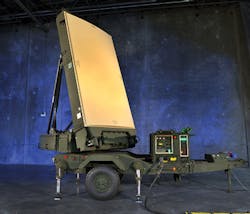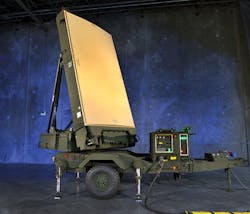Marine Corps orders nine G/ATOR radars to protect warfighters on attack beaches
QUANTICO MARINE BASE, Va. - U.S. Marine Corps surveillance experts are ordering nine more versions of the new G/ATOR radar system designed to protect Marines on attack beaches from rockets, artillery, mortars, cruise missiles, unmanned aerial vehicles (UAVs), and other low observables.
Officials of the Marine Corps Systems Command at Quantico Marine Base, Va., announced a $375.6 million order to the Northrop Grumman Corp. Mission Systems segment in Linthicum Heights, Md., for nine low-rate initial production (LRIP) versions of the Ground/Air Task-Oriented Radar (G/ATOR).
G/ATOR is an expeditionary, three-dimensional, short-to-medium-range, multi-role radar system designed to detect low-observable targets with low radar cross sections such as rockets, artillery, mortars, cruise missiles, and UAVs. Marine Corps leaders are developing and fielding G/ATOR in three blocks for use by the Marine Air Ground Task Force across the range of military operations, officials say.
Northrop Grumman built G/ATOR for short-range air defense (SHORAD) and tactical air operations Center (TAOC) air surveillance missions, including identification friend-or-foe (IFF). The increment I design was to provide for growth to all following increments without equipment re-design and provide an open architecture to enable upgrades with following increments.
The G/ATOR program was to showcase new component technologies, including the then-new VPX embedded computing fast switch-fabric interconnect. As part of the G/ATOR program's first increment, Northrop Grumman awarded a $4.3 million contract in 2008 to Curtiss-Wright Corp. for VPX-based embedded computers for radar signal processing, to be delivered by 2010.
The Ground Weapons Locating Radar (GWLR) portion of G/ATOR uses active electronically scanned array (AESA) radar technology to provide several different radar missions and adapt automatically to changing battlefield conditions.
FOR MORE INFORMATION contact Northrop Grumman Mission Systems online at www.northropgrumman.com.

